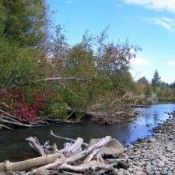A Critical Moment To Harness Green
Infrastructure To Secure Clean Water
The 18th Katoomba Meeting begins Thursday in Beijing, and will focus on the interaction between forests and water. Todd Gartner of WRI says it couldn’t come at a better time. Here he explains the benefits of investing in natural ecosystems rather than gray infrastructure to treat our water.

The 18th Katoomba Meeting begins Thursday in Beijing, and will focus on the interaction between forests and water. Todd Gartner of WRI says it couldn’t come at a better time. Here he explains the benefits of investing in natural ecosystems rather than gray infrastructure to treat our water.
This article was originally published on the WRI webiste. Click here to read the original.
Note:The views are those of Todd Gartner and James Mulligan and not necessarily those of Ecosystem Marketplace, Forest Trends, or its affiliates.
15 May 2013 | Natural ecosystems provide essential services for our communities. Forests and wetlands, for example, filter the water we drink, protect neighborhoods from floods and droughts, and shade aquatic habitat for fish populations.
While nature provides this “green infrastructure,” water utilities and other decision-makers often attempt to replicate these services with concrete-and-steel “gray infrastructure”—usually at a much greater cost. Particularly where the equivalent natural ecosystems are degraded, we build filtration plants to clean water, reservoirs to regulate water flow, and mechanical chillers to protect fish from increasing stream temperatures. And even though healthy ecosystems can reduce the operational costs of these structures, investing in restoring or enhancing various types of green infrastructure is rarely pursued—either as a substitute for or complement to gray infrastructure.
Despite America’s history of reliance on gray infrastructure, now is a critical time to tip the scales in favor of a green infrastructure approach to water-resource management. Investing in the conservation and improved management of natural ecosystems to secure and protect water systems can keep costs down and create jobs. Green infrastructure can also provide a suite of co-benefits for the air we breathe, the places we play, the wildlife we share our landscapes with, and the climate we live in.
The Time Is Now
In the United States, most gray infrastructure was built 40-50 years ago with large federal grants and few provisions for maintenance. This aging infrastructure needs significant investment to keep pace with population growth and to repair wear and tear.
Yet funds for investment in water infrastructure are drying up in an era of fiscal austerity. Naturally, water utilities, reservoir managers, and storm water managers are seeking lower-cost solutions to meet water demands of the 21st century.
That’s where green infrastructure can play a significant role.
Success Stories
Since the landmark green infrastructure investment in New York City’s Catskill-Delaware watershed in the late 1990s, there have been several similar breakthroughs across the United States. These cases illustrate how green infrastructure can secure clean water and other services at a lower cost and with greater benefits than traditional gray infrastructure. Just a few examples include:
Please see our Reprint Guidelines for details on republishing our articles.

